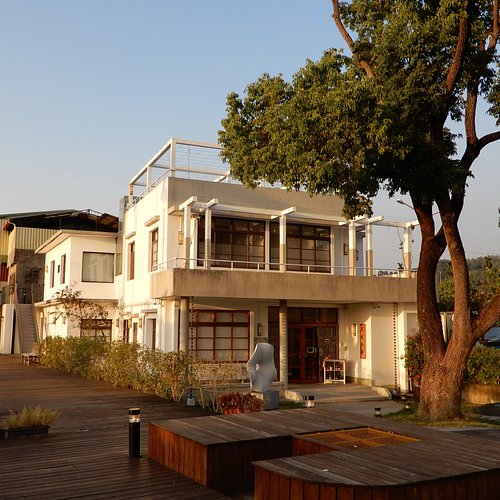6 Museums in Wufeng That You Shouldn't Miss
Discover the best top things to do in Wufeng, Taiwan including Xidadun Cultural Center, Minsheng House of Microhistory, 921 Earthquake Museum of Taiwan, Asia University Museum of Modern Art, Lin Xiantang Museum, Taiwan Modern Music Boxes Museum.
1. Xidadun Cultural Center
2. Minsheng House of Microhistory
Overall Ratings
5.0 based on 2 reviews
3. 921 Earthquake Museum of Taiwan
Overall Ratings
4.5 based on 292 reviews
At 01:47AM on September 21, 1999, the central part of Taiwan was struck by an earthquake that registered 7.3 on the Richter Scale. The resultant loss of life and damage to property put it among the worst natural disasters of the past century in Taiwan. In the wake of the 921 disaster, the local government decided to preserve some of the phenomena related to the earthquake such as slips in the fault line, collapsed school structures, raised river beds and other selected locations, to serve as reminders for the public of the need to prepare for such disasters and to be ready to provide emergency rescue services. With the rebuilding of Kwangfu Junior High on its present site, the Earthquake Memorial Museum was renamed the 921 Earthquake Museum of Taiwan on February 13, 2001. The new plan retains the original sites as a record of the damage wrought by the earthquake, and it also adds educational facilities designed to inform the public and school children about earthquakes and disaster readiness.
Reviewed By BillJoyce2014 - Poulsbo, United States
This is well worth your time. We took a cab drive here and back. The museum is built around the ruins of a junior high school, where luckily no one was killed due to the quake happening in the middle of the night. The displays and signs are very interesting, with areas educating visitors on earthquakes, tsunamis, being prepared and what went wrong. There is an area that is free, which includes the snack bar/cafe, so if you want to eat there keep your ticket handy to get back into the paid area. We enjoyed the museum and the snack bar and wished we had more time to explore.
4. Asia University Museum of Modern Art
Overall Ratings
4.5 based on 79 reviews
The founders of Asia University, Mr. Tsai Chang-Hai and Mr. Lin Tseng Lien, officially put his plan into action when he invited Mr. Tadao Ando on the 4th May, 2007. He wanted there to be a museum accessible on campus, thus invited Pritzer Prize Winner Mr. Tadao Ando to do the designing. Aware of the general scarcity of resources on school grounds across Taiwan, it's evident that students have a lack of contact with art and the different aspects and characteristics art brings to a certain place. Mr. Tsai wanted to use the environment to influence and inspire the students of Asia University. Thus, having a world class museum within the University grounds, would enable both students and people of Taiwan to experience the presentation of internationally renowned artists in an endorsed environment. During a press conference in early 2008, Mr. Ando presented his concept for the triangular design. His aim was to achieve a balance between the environment, architecture and people. He also attended an on-campus seminar with the teachers and students of Asia University and led them to inspect the base. On Dec. 22, 2008, the museum was selected among the "2008 Top Ten Visual Art News Topics in Taiwan". The groundbreaking ceremony took place on Jan. 24, 2011 and the museum was inaugurated on Oct. 24, 2013. In Sep. 2013, the museum was officially named Asia University's Museum of Modern Art. The main structure of Asia University's Museum of Modern Art has been constructed from bare concrete structural components, faced with curtain walls. The interior covers an area of 4,111 square meters and the surrounding grounds measure up to 19,840 square meters. Designed by the Japanese architect, Tadao Ando, the equilateral triangle has been adopted as the basic constructional element and skillfully incorporated in a repeated motif to form three stories of the triangular building. An atrium space is created with a crisscrossing arrangement of concrete beams and the outdoor terraces contain sculptures on display. While the ground floor contains an area dedicated to guests, the café, a gift shop along with a lecture hall, the first and second floors contain art galleries, with one floor being the reverse mirror image of the other. On the first floor the perimeter hallways are wide enough to be used for the display of artworks on moveable walls, while on the top floor much narrower hallways circumvent a set of inner galleries. Hence, the galleries on the lower floor have a lot of daylight from one side, the upper floor galleries have to depend on electric light for illumination.





